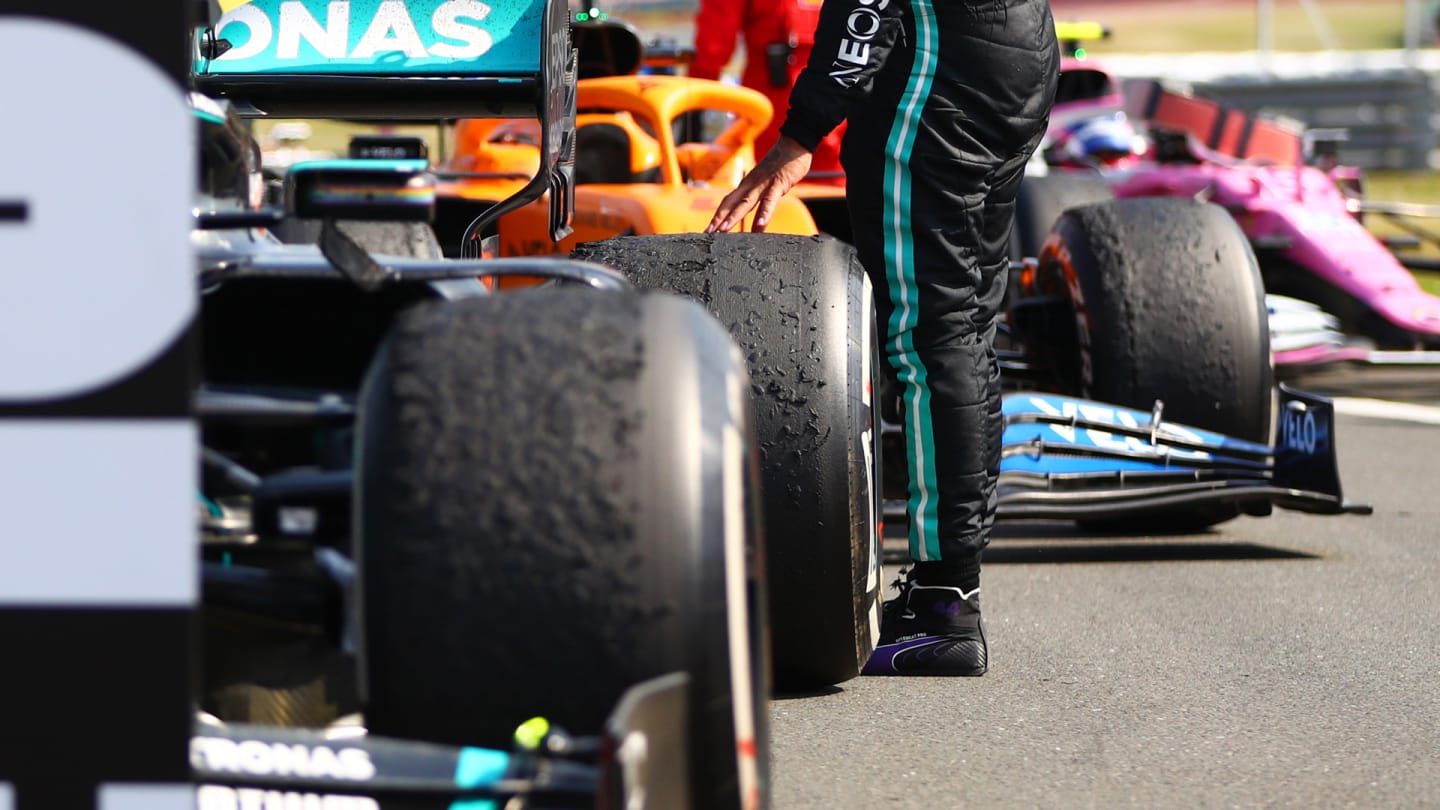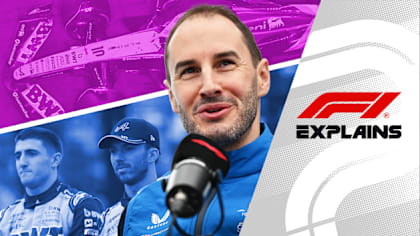
Feature
Why Red Bull’s tyre gamble was a double risk for Verstappen – and how it so nearly backfired

Share

Max Verstappen’s victory in the 70th Anniversary Grand Prix over the previously all-conquering Mercedes team was, in the end, a comfortable one, though it was in fact built on the most slender of margins.
With severe rear tyre blistering, neither the pole-setting Valtteri Bottas nor Lewis Hamilton could hold off the Red Bull-Honda of Verstappen who, after staying out for an opening stint twice as long as theirs, overcut himself into the lead and proceeded to control the race, untroubled by any tyre issues.
READ MORE: Verstappen hails ‘incredible’ victory at Silverstone, saying ‘I didn’t see it coming!’
Uniquely, Verstappen had run the hard tyre in Q2 and this enabled that longer first stint. But hindsight suggests that simply determined the route to his victory, not the victory itself, which would likely have unfolded even if he’d run the same strategy as Mercedes.
There would always have come a point where the Mercedes’ tyre problems would have compromised them around the pit stops and Verstappen’s much superior pace could have been used to leapfrog past.
Verstappen said he hoped 'different' tyre strategy would work after qualifying at the 70th Anniversary GP
But if the Mercedes had not suffered their tyre problems, Verstappen’s hard tyre Q2 strategy may have offered him a crucial advantage and possibly even allowed him to have competed for the win against a healthy Mercedes.
It was a similar strategy to that which Red Bull had been attempting in the season-opening Austrian Grand Prix where Verstappen suffered an early retirement when holding second place between the Mercedes and on a harder tyre, intending to go longer. We didn’t get to find out whether it would have worked there – and nor did we here really, as his victory was assured regardless.
HIGHLIGHTS: Watch the key moments from Verstappen's brilliant surprise win at Silverstone
Pirelli’s re-positioning of the compounds for the 70th Anniversary race deliberately made it strategically difficult, in an attempt at differentiating the race from the British Grand Prix seven days earlier.
Moving the range a whole step softer, last week’s medium (the C2) became this week’s hard. Last week’s soft (the C3) became the new medium. This week’s soft (the C4) was essentially unusable as a race tyre around the long, high-G sweeps of Silverstone, wildly overheating even by the end of a single lap and imposing an unfeasibly slow and short race stint.

Mercedes had more problems keeping the tyres cool than Red Bull, and Verstappen's hard tyre gamble assured victory
Just to spice it up further, Pirelli allocated each car eight of these unsuitable tyres but only three of the medium and two of the hard. For the whole weekend.
Even over a qualifying lap, the soft was no faster than the medium. It would be quicker at the start of the lap but overheating by the time they got to the Maggotts/Becketts sequence and thereby slower in the final sector.
This allowed everyone to ignore the soft for Q2, saving them the obligation from having to use it in the race. But the single lap pace difference between the medium and the hard was significant. Which made Red Bull’s strategy of using the hard quite risky. Only Verstappen tried it.
Mercedes shied away from it, partly because of their experience last week when Hamilton and Bottas had each lost a set of mediums in qualifying – the former with a spin, the latter with gravel cuts. This week, given their apparent performance advantage, they were not inclined to take the risk because to lose one of just two sets of hards would potentially destroy their race.
70th Anniversary Grand Prix: Sensational Verstappen wins at Silverstone
So there was a double risk to Verstappen’s hard-tyre strategy. He might not be fast enough on them to make Q3 and if he flat-spotted or damaged them in any way in the attempt, his race strategy was doomed. Furthermore, he could only do one run because, with only two such sets allocated, he couldn’t afford to burn through both. He delivered the lap beautifully and error-free. But would it be fast enough?
He got through ninth-quickest, a couple of tenths ahead of the cut-off. Had Carlos Sainz or Sebastian Vettel not been compromised, Verstappen’s gamble could have bust.
“We thought that it was our best chance to take on the Mercedes, to do something different. And by starting on the hard tyre we gave ourselves a chance,” said Christian Horner. “I’m surprised no one else tried it.”
YOU MIGHT ALSO LIKE
News Formula 1 welcomes PwC as Official Consulting Partner
News 'That's what you need to fight for a championship' – Verstappen reveals key Piastri trait that could help him in title battle
Podcast F1 EXPLAINS: Ask an F1 Team Principal with Alpine boss Oliver Oakes
News Ava Dobson announced as F1 ACADEMY Miami Wild Card Driver
.jpg)



)